quantum computing
Roman Kuzmin earns NSF CAREER Award
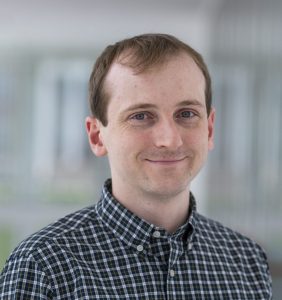
Congrats to Roman Kuzmin, the Dunson Cheng Assistant Professor of Physics, for being selected for an NSF CAREER award. The 5-year award will support Kuzmin and his group’s research on understanding fluxonium qubits and how their properties can be used to simulate the collective behavior of quantum materials.
Superconducting qubits are one promising technology for quantum computing, and the best-studied type is the transmon. Kuzmin’s work will investigate the fluxonium type, which he expects to be an improvement over transmons because they have demonstrated higher coherence, and their ground and first excited state are better separated from other energy levels.
“These properties make fluxonium behave similar to a magnetic moment, or like a magnetic atom, which we can fabricate in the lab and tune its properties,” Kuzmin says. “Things become interesting when interactions are very strong, and you need to involve many-body physics to describe them. We plan to build circuits which recreate the behavior of these complicated systems so that we have better control and can study multiple collective phenomena that appear in materials with magnetic impurities.”
In the lab, this research will be explored by building circuits with fluxonium qubits, capacitors, and inductors, which are further combined into more complicated circuits. The circuits will be used to test theoretical predictions of such behaviors as quantum phase transitions, entanglement scaling, and localization.
In addition to an innovative research component, NSF proposals require that the research has broader societal impacts, such as developing a competitive STEM workforce or increasing public understanding of science. Kuzmin plans to expand his work in the department’s Wonders of Physics program. This past February, he helped build a wave machine (with Steve Narf) to visually demonstrate patterns of interference, and he performed in all eight shows. His group has also participated in TeachQuantum, a summer research program for Wisconsin high school teachers run through HQAN, the NSF-funded Quantum Leap Challenge Institute that UW–Madison is a part of.
“One of the goals of this proposal is to introduce more quantum physics to the annual Wonders of Physics show; another is to provide hands-on training for high school teachers in my lab,” Kuzmin says. “Together, these activities will increase K-12 students’ engagement with quantum science and technology.”
The Faculty Early Career Development (CAREER) Program is an NSF-wide activity that offers the Foundation’s most prestigious awards in support of early-career faculty who have the potential to serve as academic role models in research and education and to lead advances in the mission of their department or organization. Activities pursued by early-career faculty should build a firm foundation for a lifetime of leadership in integrating education and research.
Four professors earn promotions, including tenure for Ke Fang
Congratulations to Associate Professor Ke Fang on her promotion with tenure, to Professor Justin Vandenbroucke on his promotion to full professor, and to Profs. Dan Hooper and Britton Plourde who were both granted tenure!

Prof. Fang is an experimental particle astrophysicist and WIPAC investigator who studies the origins of subatomic particles and their fundamental nature by detecting messengers from throughout the universe. She has made major contributions to the analysis of data from the High Altitude Water Cherenkov (HAWC) Observatory, the IceCube Observatory and the NASA Fermi satellite.
In 2021, Fang received the Shakti P. Duggal Award for Early Career Contributions in Cosmic Ray Physics. In 2023, she received the NSF CAREER award. In 2024, she was named a Sloan Fellow. Later that year, she was named the inaugural recipient of the Bernice Durand Faculty Fellowship, a departmental award named in honor of Durand, one of the first two women faculty members in the UW–Madison physics department. She also served as the US spokesperson for HAWC in 2023-2025.
“Ke Fang is one of the most impactful astroparticle phenomenologists of her generation,” says physics department chair and professor Kevin Black. “Her work is highly original and broad with strong implications for the emerging area of multi-messenger astronomy and particle astrophysics.”
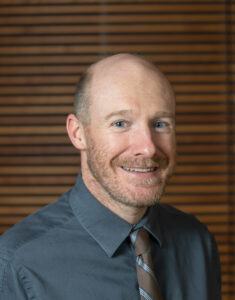
Prof. Vandenbroucke is also a WIPAC investigator and experimental particle astrophysicist. He joined the department in 2013. His main research focus is in multi-messenger astrophysics, including neutrino astronomy, gamma-ray astronomy, and cosmic rays. He is a member of the IceCube collaboration and the Cherenkov Telescope Array Observatory consortium and is an affiliate member of the Fermi LAT and VERITAS collaborations.
Vandenbroucke was previously promoted to associate professor with tenure in 2019. He was named a Vilas Associate from 2023-2025, and was a co-recipient of UW2020 awards in 2018 and 2020. He also leads the Distributed Electronic Cosmic-Ray Observatory (DECO), a citizen science project that enables users around the world to detect cosmic rays and other energetic particles with their cell phones and tablets.
“Justin Vandenbroucke is an outstanding experimentalist who, at the same time, develops creative and challenging data analysis projects that have led to scientific results published in highly cited papers,” Black says. “He does this in two different fields, gamma-ray and neutrino astrophysics, and is a leader in both.”

Prof. Hooper, PhD’03 was named the director of WIPAC and joined the physics faculty as a full professor in 2024. He is a theoretical particle astrophysicist whose research focuses on the interface between particle physics and cosmology. His work has spanned the areas of dark matter, high-energy neutrino astronomy, gamma-ray astronomy and cosmic-rays. He is the author of several books and co- hosts the physics podcast “Why This Universe?” breaking down some of some of the biggest ideas in physics into easily digestible chunks.
“Dan Hooper is a singular figure in his field, a stand-out leader in terms of scientific impact whose ideas cast a wide influence on the study of high energy theory, dark matter phenomenology, collider physics, astroparticle physics, and the direct experimental and observational search for dark matter,” Black says.
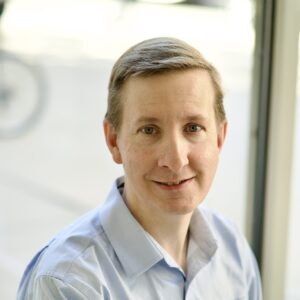
Prof. Plourde joined the department as a full professor in 2024 from Syracuse University. He is an experimental condensed matter physicist who studies superconducting quantum circuits. He is currently on a half-time leave at UW–Madison and works with Qolab, a quantum computing startup company based in Madison. Plourde was elected a Fellow of the American Physical Society in 2024 in the Division of Quantum Information, and in 2023 was elevated to Fellow of the Institute of Electrical and Electronics Engineers.
“Britton Plourde is internationally recognized for his contributions in the field of low-temperature physics and superconducting quantum circuits,” Black says. “He has made significant contributions in the field of superconducting quantum computing and is best known in the community for his works on superconducting qubits, left-handed and quantum metamaterials, and, more recently, for studies of decoherence sources and suppression of errors in superconducting quantum circuits.”
Natasha Kassulke and Alisa King-Klemperer contributed to this story
Mark Saffman part of team awarded in latest round of Research Forward funding
This story was originally published by the OVCR
The Office of the Vice Chancellor for Research (OVCR) hosts the Research Forward initiative to stimulate and support highly innovative and groundbreaking research at the University of Wisconsin–Madison. The initiative is supported by the Wisconsin Alumni Research Foundation (WARF) and will provide funding for 1–2 years, depending on the needs and scope of the project.
Research Forward seeks to support collaborative, multidisciplinary, multi-investigator research projects that are high-risk, high-impact, and transformative. It seeks to fund research projects that have the potential to fundamentally transform a field of study as well as projects that require significant development prior to the submission of applications for external funding. Collaborative research proposals are welcome from within any of the four divisions (Arts & Humanities, Biological Sciences, Physical Sciences, Social Sciences), as are cross-divisional collaborations.
Physics professor Mark Saffman is part of a team awarded funding in Round 4 of the Research Forward competition for their project:
Quanta sensing for next generation quantum computing
Future quantum computers could open new scientific and engineering frontiers, impacting existential challenges like climate change. However, quantum information is delicate; it leaks with time and is prone to significant errors. These errors are exacerbated by imperfect reading and writing of quantum bits (qubits). These challenges fundamentally limit our ability to run quantum programs, and could hold back this powerful technology. Fast and accurate qubit readout, therefore, is essential for unlocking the quantum advantage. Current quantum computers use conventional cameras for reading qubits, which are inherently slow and noisy.
This research project will use quanta (single-photon) sensors for fast and accurate qubit readout. Quanta sensors detect individual photons scattered from qubits, thus enabling sensing qubits at 2-3 orders of magnitude higher speeds (few microseconds from ~10 milliseconds), thereby transforming the capabilities (speed, accuracy) of future quantum computers, and for the first time, paving the way for scalable and practical quantum computing.
Principal investigator: Mohit Gupta, associate professor of computer sciences
Co-PIs: Mark Saffman, professor of physics; Swamit Tannu, assistant professor of computer sciences; Andreas Velten, associate professor of biostatistics and medical informatics, electrical and computer engineering
MSPQC’s Preetham Tikkireddi wins second place at QED-C student poster presentation
MSPQC student Preetham Tikkireddi won second place for his poster, “Understanding security side channel attacks on multi-tenancy quantum computers,” at the plenary meeting of the Quantum Economic Development Consortium (QED-C), held March 20-21 in Evanston, IL.
Students who attended the plenary first learned best practices for presenting their research to a non-science audience, a useful skill for a cutting-edge field where investors, hiring managers, and policy makers do not necessarily have a quantum background. Then, the students implemented those skills at the judged poster session.
“[The poster session attendees] are really smart people, but they’re not quantum people, so you set them up for asking questions, and based on the questions that they’re asking, you determine how deep you want to go into your research.” Tikkireddi says. “It was a very different kind of experience, rather than just a plain research presentation to a professor or people who already know the field.”
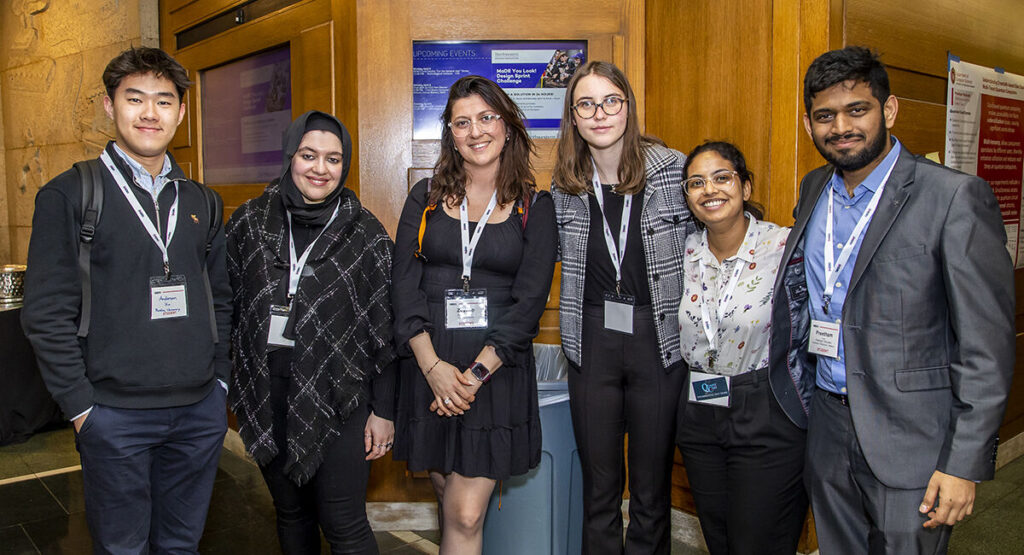
Tikkireddi’s research, conducted with computer sciences professor Swamit Tannu, looked at the potential for exploiting crosstalk when two users access the same quantum computer at the same time.
“Right now, quantum computers are really expensive, and the way we access them is by sending jobs to these quantum providers like IBM or IonQ,” Tikkireddi explains. “But the queues are really long. If you’re lucky, you can get the results back the next day.”
Quantum computing capacity is growing rapidly in the form of more and more qubits, and most jobs submitted to these long queues do not need to use all the qubits. Tikkireddi and Tannu thought that one way to increase throughput would be to allow users to share the same quantum computer, each using a subset of the qubits. But quantum computations rely on qubit entanglement, where physically separate qubits interact and share information. It was unclear if sharing a quantum computer opens users to security risks.
In his work, Tikkireddi asked if he could count C-NOTs — the gate that is used to create this entanglement — of another user. He entangled two qubits, then asked if two other qubits could “hear” what the first two were doing.
“We were able to use that to figure out how many C-NOTs the other guy is doing. That’s step one of an attack,” Tikkireddi says. “Your algorithm is your intellectual property, so you don’t want people to steal it. It’s a security problem.”
With this initial analysis identifying potential security risks amongst shared quantum computer use, Tikkireddi says providers should currently not let users share computing time, and that future research should focus on ways to mitigate these crosstalk attacks in an effort to balance efficiency with safeguarding intellectual property.
Tikkireddi credits Tannu for helping to guide his poster away from a traditional research poster and toward one more accessible to a non-science audience. He also appreciates the support from MSQPC associate director Katerina Moloni for encouraging and preparing students to take advantage of these training opportunities.
“It was a really good networking opportunity, especially for me, who is looking for a job right now,” Tikkireddi says. “I would highly recommend students to go to these kinds of events because we get a chance to interact with people in the industry.”
Physics major Nathan Wagner awarded Goldwater Scholarship
This story is modified from one published by University Communications
Physics and mathematics major Nathan Wagner is one of four UW–Madison students named as winners of 2024 Goldwater Scholarships, the premier undergraduate scholarship in mathematics, engineering and the natural sciences in the United States.
The scholarship program honors the late Sen. Barry Goldwater and is designed to foster and encourage outstanding students to pursue research careers.
“I’m so proud of these four immensely talented scholars and all they’ve accomplished,” says Julie Stubbs, director of UW’s Office of Undergraduate Academic Awards. “Their success also reflects well on a campus culture that prioritizes hands-on research experiences for our undergraduates and provides strong mentoring in mathematics, engineering and the natural sciences.”
The other UW–Madison students are juniors Katarina Aranguiz and Scott Chang and sophomore Max Khanov .
A Goldwater Scholarship provides as much as $7,500 each year for up to two years of undergraduate study. A total of 438 Goldwater Scholars were selected this year from a field of 1,353 students nominated by their academic institutions.

Sophomore Nathan Wagner of Madison, Wisconsin
Wagner is majoring in physics and mathematics. Wagner began research in Professor Mark Saffman’s quantum computing lab in spring 2021 as a high school junior. His first-author manuscript, “Benchmarking a Neutral-Atom Quantum Computer” was recently accepted for publication in the International Journal of Quantum Information. In Summer 2023, Wagner started research with the Physics Department’s High Energy Physics Group, working alongside Professor Sridhara Dasu and others on future particle colliders design research. Wagner was invited to present his research at the Department of Physics Board of Visitors meeting in fall 2023. This summer, he will complete a research internship at Argonne National Laboratory near Chicago, focusing on computational physics. Wagner plans to pursue a PhD in physics and a career at a U.S. Department of Energy national laboratory researching novel carbon-neutral energy generation, quantum computing and networking, nuclear photonics and computational physics.
About the Goldwater Scholarship
Congress established the Barry Goldwater Scholarship and Excellence in Education Foundation in 1986. Goldwater served in the U.S. Senate for over 30 years and challenged Lyndon B. Johnson for the presidency in 1964. A list of past winners from UW–Madison can be found here.
Ben Woods and team named finalists in 2023 WARF Innovation Awards
Each fall the WARF Innovation Awards recognize some of the best inventions at UW–Madison. WARF receives hundreds of new invention disclosures each year. Of these disclosures, the WARF Innovation Award finalists are considered exceptional in the following criteria:
- Has potential for high long-term impact
- Presents an exciting solution to a known important problem
- Could produce broad benefits for humankind
One of the six finalists comes from Physics. Research Associate Benjamin Woods and a team including Distinguished Scientist Mark Friesen, John Bardeen Prof. of Physics Mark Eriksson, Honorary Associate Robert Joynt, and Graduate Student Emily Joseph developed a quantum device that shows a significant increase in valley splitting, a key property needed for error-free quantum computing. The device features a novel structural composition that turns conventional wisdom on its head.
Two winners, selected from the six finalists, will be announced in WARF’s annual holiday greeting; sign up to receive the greeting here. Each of the two Innovation Award winners receive $10,000, split among UW inventors.
“Sandwich” structure found to reduce errors caused by quasiparticles in superconducting qubits
Qubits are notoriously more prone to error than their classical counterparts. While superconducting quantum computers currently use on the order of 100 to 1000 qubits, an estimated one million qubits will be needed to track and correct errors in a quantum computer designed for real-world applications. At present, it is not known how to scale superconducting qubit circuits to this size.
In a new study published in PRX Quantum, UW–Madison physicists from Robert McDermott’s group developed and tested a new superconducting qubit architecture that is potentially more scalable than the current state of the art. Control of the qubits is achieved via “Single Flux Quantum” (SFQ) pulses that can be generated close to the qubit chip. They found that SFQ-based control fidelity improved ten-fold over their previous versions, providing a promising platform for scaling up the number of qubits in a quantum array.

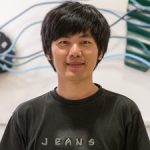
The architecture involves a sandwich of two chips: one chip houses the qubits, while the other contains the SFQ control unit. The new approach suppresses the generation of quasiparticles, which are disruptions in the superconducting ground state that degrade qubit performance.
“This structure physically separates the two units, and quasiparticles on the SFQ chip cannot diffuse to the quantum chip and generate errors,” explains Chuan-Hong Liu, PhD ’23, a former UW–Madison physics graduate student and lead author of the study. “This design is totally new, and it greatly improves our gate fidelities.”
Liu and his colleagues assessed the fidelity of SFQ-based gates through randomized benchmarking. In this approach, the team established operating parameters to maximize the overall fidelity of complex control sequences. For instance, for a qubit that begins in the ground state, they performed long sequences incorporating many gates that should be equivalent to an identity operation; in the end, they measured the fraction of the population remaining in the ground state. A higher measured ground state population indicated higher gate fidelity.
Inevitably, there are residual errors, but the reduced quasiparticle poisoning was expected to lower the error rate and improve gate fidelities — and it did.

“Most of the gates had 99% fidelity,” Liu says. “That’s a one order of magnitude reduction in infidelity compared to the last generation.”
Importantly, they showed the stability of the SFQ-based gates over the course of a six-hour experimental run.
Later in the study, the researchers investigated the source of the remaining errors. They found that the SFQ unit was emitting photons with sufficient energy to create quasiparticles on the qubit chip. With the unique source of the error identified, Liu and his colleagues can develop ways to improve the design.
“We realized this quasiparticle generation is due to spurious antenna coupling between the SFQ units and the qubit units,” Liu says. “This is really interesting because we usually talk about qubits in the range of one to ten gigahertz, but this error is in the 100 to 1000 gigahertz range. This is an area people have never explored, and we provide a straightforward way to make improvements.”
This study is a collaboration between the National Institute of Standards and Technology, Syracuse University, Lawrence Livermore National Laboratory, and UW–Madison.
This work was funded in part by the National Science Foundation (DMR-1747426); the Wisconsin Alumni Research Foundation (WARF) Accelerator; Office of the Director of National Intelligence, Intelligence Advanced Research Projects Activity (IARPA-20001-D2022-2203120004); and the NIST Program on Scalable Superconducting Computing and the National Nuclear Security Administration Advanced Simulation and Computing Beyond Moore’s Law program (LLNL-ABS-795437).
Physics has three winners in the Cool Science Image contest!
The winners of the UW–Madison 13th annual Cool Science Image contest were announced, and Physics has three winners! Our winners include graduate student Jacob Scott, the graduate student-professor pairing of Jimena González and Keith Bechtol, and alum Aedan Gardill, PhD ’23. Their winning images are below.
A panel of experienced artists, scientists and science communicators chose 12 winning images based on the aesthetic, creative and scientific qualities that distinguished them from scores of entries. The winning entries showcase the research, innovation, scholarship and curiosity of the UW–Madison community through visual representations of socioeconomic strata, brain cells snuffed out in Parkinson’s disease, the tangle of technology required to equip a quantum computing lab and a bug-eyed frog that opened students’ eyes to the world.
The winning images go on display this week in an exhibit at the McPherson Eye Research Institute’s Mandelbaum and Albert Family Vision Gallery on the ninth floor of the Wisconsin Institutes for Medical Research, 111 Highland Ave. The exhibit, which runs through the end of 2023, opens with a public reception at the gallery Thursday, Sept. 28, from 4:30 to 6:30 p.m. The exhibit also includes historical images of UW science, in celebration of the 175th anniversary of the University of Wisconsin’s founding.
The Cool Science Image Contest recognizes the technical and creative skills required to capture and create images, videos and other media that reveal something about science or nature while also leaving an impression with their beauty or ability to induce wonder. The contest is sponsored by Madison’s Promega Corp., with additional support from UW–Madison’s Office of University Communications.



Partnerships bring together UW–Madison quantum computing research, industry leaders
Two leading companies in semiconductor quantum computing are partnering with researchers at the University of Wisconsin–Madison, itself a long-time academic leader in quantum computing.
UW–Madison’s separate partnerships with Intel and HRL Laboratories are part of a first round of collaborations announced June 14 by the LPS Qubit Collaboratory (LQC), a national Quantum Information Science Research Center hosted at the Laboratory for Physical Sciences (LPS). Established in support of the National Quantum Initiative Act, LQC is facilitating partnerships between industry and academic and national labs to advance research in quantum information science.
“These collaborations are great examples of UW–Madison partnering with industry on the development of important technologies, in this case semiconductor quantum computers,” says physics professor Mark Eriksson, the UW–Madison lead on the partnerships.